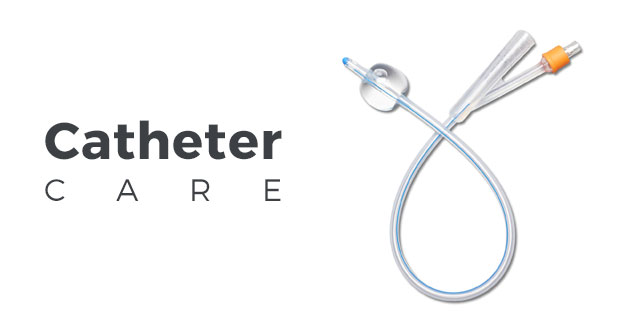A urinary catheter or a Foley’s catheter is a flexible plastic tube used to drain urine from the urinary bladder when a person cannot urinate. The catheter is held in place without slipping by a small balloon. The catheter allows urine to drain from the bladder into a bag.
It can be used for both men and women.
A catheter may be needed for various medical conditions.
- Always wash your hands before and after handling a catheter.
- Make sure that urine is flowing out of the catheter into the urine collection bag.
- Make sure that the catheter tubing does not get twisted or kinked.
- Keep the urine collection bag below the level of the bladder for it to drain freely.
- Make sure that the urine collection bag does not drag and pull on the catheter especially when walking or getting up from the bed. The catheter tubing should always over the thighs and not under.
- It is okay to have bath with a catheter and urine collection bag in place, unless the doctor says not to.
- Check for redness, pain or signs of infection in the area around the catheter. Signs of infection include pus discharge or irritated, swollen, red, skin.
- Clean the area around the catheter twice a day with water. Dry with a clean towel afterward.
- Do not apply powder or lotion to the skin around the catheter.
- Do not tug or pull on the catheter.
- A person should not have sexual intercourse while wearing a catheter.
- At night it may be helpful to hang the urine collection bag on the side of the bed.
You should consult the doctor if
- No urine or very little urine is flowing into the collection bag for 4 hours or more.
- Few drops of urine may escape around the catheter when you are straining or due some bladder spasm which may be normal.
- There is new pain in the lower abdomen or have feeling of full bladder.
- The urine has changed colour, is very cloudy, looks bloody, has a bad smell, or has large blood clots in it.
- The place where the catheter goes into the body or the insertion sites becomes very irritated, swollen, red, or tender, or there is pus draining from the site.
- It is not unusual to see some small debris in the tubing, as long as they are draining not to worry.
- Urine is leaking from the insertion site.
- There are signs of a severe infection such as a fever of 100.4°F (38°C) or higher or back or flank pain.
- Symptoms such as nausea, vomiting or shaking chills occur.
 Urologist in Chennai | Robotic Urologist in India | Chennai Urology
Urologist in Chennai | Robotic Urologist in India | Chennai Urology

